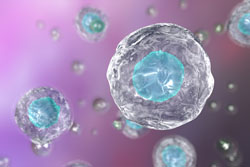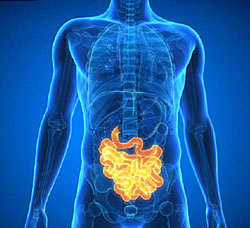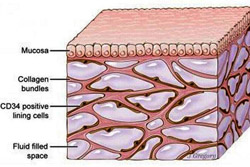Fasting Boosts Gut Health

A 24 hour fast can reverse age related decline of stem cell function in the gut according to a study conducted by biologists at the Massachusetts Institute of Technology. The study reveals that a metabolic switch occurs during a 24 hour fast. This switch results in a break down by cells of fatty acids rather than glucose. This change boosts gut stem cell regeneration in both old and young mice.
With age stem cells in the intestine start to lose their regeneration ability. This reduction makes it more difficult for people to recover from gastrointestinal conditions and infections since the stem cells in the intestine are the source for new cells. The biologists discovered they could boost stem cell regeneration using a molecule which activates the identical metabolic switch in the stem cells to induce burning fat rather than utilizing carbohydrates. This intervention could possibly be used for people who are recovering from a variety of conditions that effect the GI tract.
Fasting provides many positive effects in the intestines. It boosts regeneration of stem cells and can be useful in a variety of ailments which affect the intestines. Switching the intestinal stem cells to fatty acid oxidation significantly enhanced their function.
Omer H. Yilmaz, Assistant Professor of Biology at MIT, refers to stem cells in the intestinal wall as ?workhorses of the intestines?. And diet has a profound effect on the regeneration ability of tissue. It is known that a low calorie diet enhances longevity in humans. Intestinal stem cell function declines with aging which therefore interferes with the intestines ability to repair after damage. The researchers decided to focus on how a 24 hour fast might enhance the function of both old and young intestinal stem cells.
Once mice had fasted for 24 hours, the team removed stem cells from the intestine and transferred them to a culture dish. Their goal was to see if the cells would rise to
?mini intestines? which are known as organoids. Interestingly the team discovered that stem cells from the fasting mice resulted in double the regenerative capacity. Fasting had a profound effect on the intestinal crypts to make more organoids which are driven by stem cells. They observed this in both aged and young mice.
Additional studies which included sequencing RNA messenger of stem cells from the fasting mice showed fasting induced cells to change from the usual metabolism of carbohydrate burning to fatty acid metabolizing. The switch that occurs is through activation of transcription factors also referred to as PPARs. These turn on genes which are part of the metabolizing of fatty acids. The team discovered that by turning off this pathway, the fasting period would no longer boost regeneration. The team was also able to reproduce the positive effects of fasting to mimic the effects of PPARs by treating the mice with a molecule which mimics these effects. By activating just one metabolic pathway they were able to reverse some age phenotypes.
The next step is to study the process of the metabolic switch which provokes stem cells to strengthen their ability to regenerate. The team also plans to further research into how fasting might affect the ability of stem cells to regenerate other tissue types.
It may be possible to stimulate regeneration without having to fast for 24 hours which can be difficult for some people. Intermittent fasting involves eating during an 8 hour period each day and then fasting for 16 hours while drinking plenty of water. Some people do this every day. For those who have trouble going without food it can help a to eat a very low sugar diet including avoidance of high sugar fruits such as bananas, dates and dried fruit. All sweet foods and sweeteners tend to stimulate appetite and cause cravings.
To view the original scientific study click here: Fasting Activates Fatty Acid Oxidation to Enhance Intestinal Stem Cell Function during Homeostasis and Aging




 A new study conducted by the University of Otago has revealed that fruits and vegetables consumed in their natural state promote better?brain health. The study which was published in Frontiers in Psychology found that for mental health in particular these food items in their ?unmodified? state retained more of their nutrients as opposed to consuming them cooked or canned.
A new study conducted by the University of Otago has revealed that fruits and vegetables consumed in their natural state promote better?brain health. The study which was published in Frontiers in Psychology found that for mental health in particular these food items in their ?unmodified? state retained more of their nutrients as opposed to consuming them cooked or canned.





